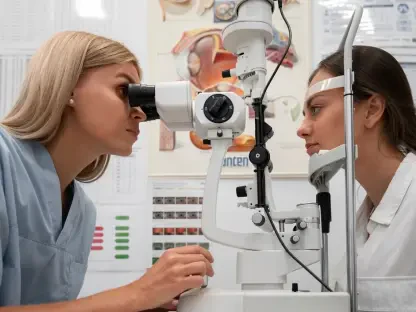Today, we’re thrilled to sit down with Faisal Zain, a renowned expert in healthcare and medical technology with years of experience in the manufacturing of diagnostic and treatment devices. His innovative insights have shaped advancements in the field, making him the perfect person to discuss the evolving landscape of pediatric care. In this conversation, we’ll explore critical challenges families face in navigating healthcare systems, the role of technology in bridging gaps, and the ways in which forward-thinking approaches can transform the patient experience for parents and children alike.
How did you first become aware of the unique challenges parents face in pediatric care, and what inspired you to focus on this area?
My interest in pediatric care challenges really took root when I started looking at how fragmented healthcare systems impact families. Working in medical technology, I saw firsthand how inefficiencies in communication and record-sharing create stress for parents who just want the best for their kids. I’ve heard countless stories of families repeating medical histories or feeling rushed during appointments, and it hit me that technology could be a game-changer here. My drive comes from a belief that we can—and should—make navigating healthcare as seamless as possible for parents, especially when it comes to their children’s well-being.
What do you see as the biggest barriers preventing parents from feeling fully supported during pediatric appointments?
I think the core issue is time and communication. Many parents feel rushed because appointment slots are often tightly scheduled, leaving little room for in-depth discussions. On top of that, there’s a disconnect in how information is shared—parents often leave unclear about next steps because the guidance isn’t presented in a digestible way. It’s not just about the doctor’s expertise; it’s about creating an environment where families feel heard and understood, and that requires both structural changes in scheduling and better tools for post-visit clarity.
How can healthcare providers address the frustration parents experience when they have to repeatedly share their child’s medical history?
This frustration stems from a lack of interoperability in healthcare systems. Too often, providers operate in silos, with no shared platform for patient data. The solution lies in creating centralized, secure systems where a child’s full health history is accessible to all relevant clinicians. It’s not just about tech—it’s about designing workflows that prioritize ease for families. If parents don’t have to play the role of historian every time they see a new provider, it frees up mental space to focus on their child’s care.
In your opinion, why is access to a comprehensive health history and visit notes still so limited for most families?
A big part of it is the slow adoption of integrated technology in healthcare. Many practices still rely on outdated systems that don’t talk to each other, and there’s also a hesitation around data privacy and policy hurdles. But beyond that, there’s been less investment in consumer-facing tools compared to backend solutions for providers. We need to shift focus to platforms that empower parents with access to their child’s records in a user-friendly way, while still ensuring security. It’s a complex puzzle, but one we’re capable of solving with the right commitment.
What role do you believe technology should play in modernizing communication and scheduling for pediatric care?
Technology should be the bridge that connects families and providers, not a barrier. Parents are clear that they want modern tools—think patient portals, apps for scheduling, or even simple ways to message a doctor after hours. These aren’t luxuries; they’re essentials in today’s world. The right tech can streamline booking appointments, send reminders, and provide a space for follow-up questions, which reduces stress for parents. It’s about designing solutions that fit into their lives, whether they prefer a phone call or a quick app update.
How can technology balance the need for convenience while still maintaining the personal touch of in-person care?
It’s all about intentional design. Technology shouldn’t replace the human connection; it should enhance it. For example, virtual care options can handle quick check-ins or follow-ups, freeing up in-person visits for deeper conversations. Tools like detailed post-visit summaries sent via a portal can reinforce what was discussed face-to-face. The key is to ensure tech feels like an extension of care, not a cold substitute. When done right, it can make parents feel more supported, not less.
What innovative solutions or approaches are you most excited about in the realm of pediatric healthcare?
I’m really excited about the potential of integrated multispecialty platforms. Imagine a system where pediatricians, specialists, and urgent care are all under one umbrella, sharing real-time data and coordinating care seamlessly. Add to that consumer-focused tech—like apps that let parents track milestones or access records—and you’ve got a model that truly centers families. It’s not just about solving today’s pain points; it’s about anticipating needs and building trust through consistency and transparency.
What’s your forecast for the future of pediatric care, especially with the integration of technology?
I believe we’re on the cusp of a major shift where technology will finally catch up to the needs of families in pediatric care. In the next decade, I expect to see widespread adoption of centralized health records and communication tools that make care feel personalized, even at scale. Virtual care will evolve to become a true complement to in-person visits, not just a stopgap. My hope is that we’ll see a system where no parent feels rushed or uninformed, and where tech empowers them to advocate for their child with confidence. It’s an ambitious vision, but with the right focus and investment, it’s absolutely achievable.









